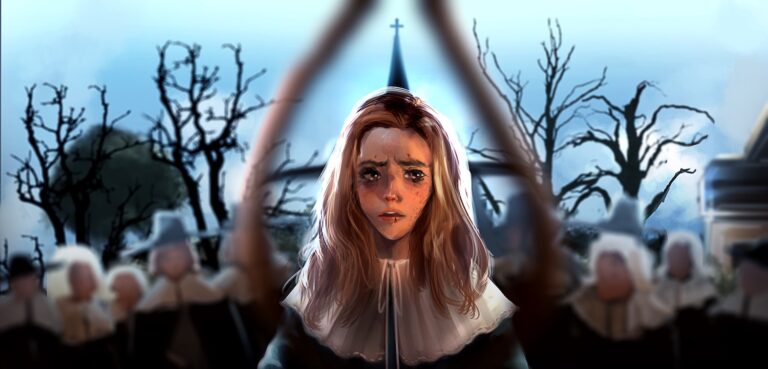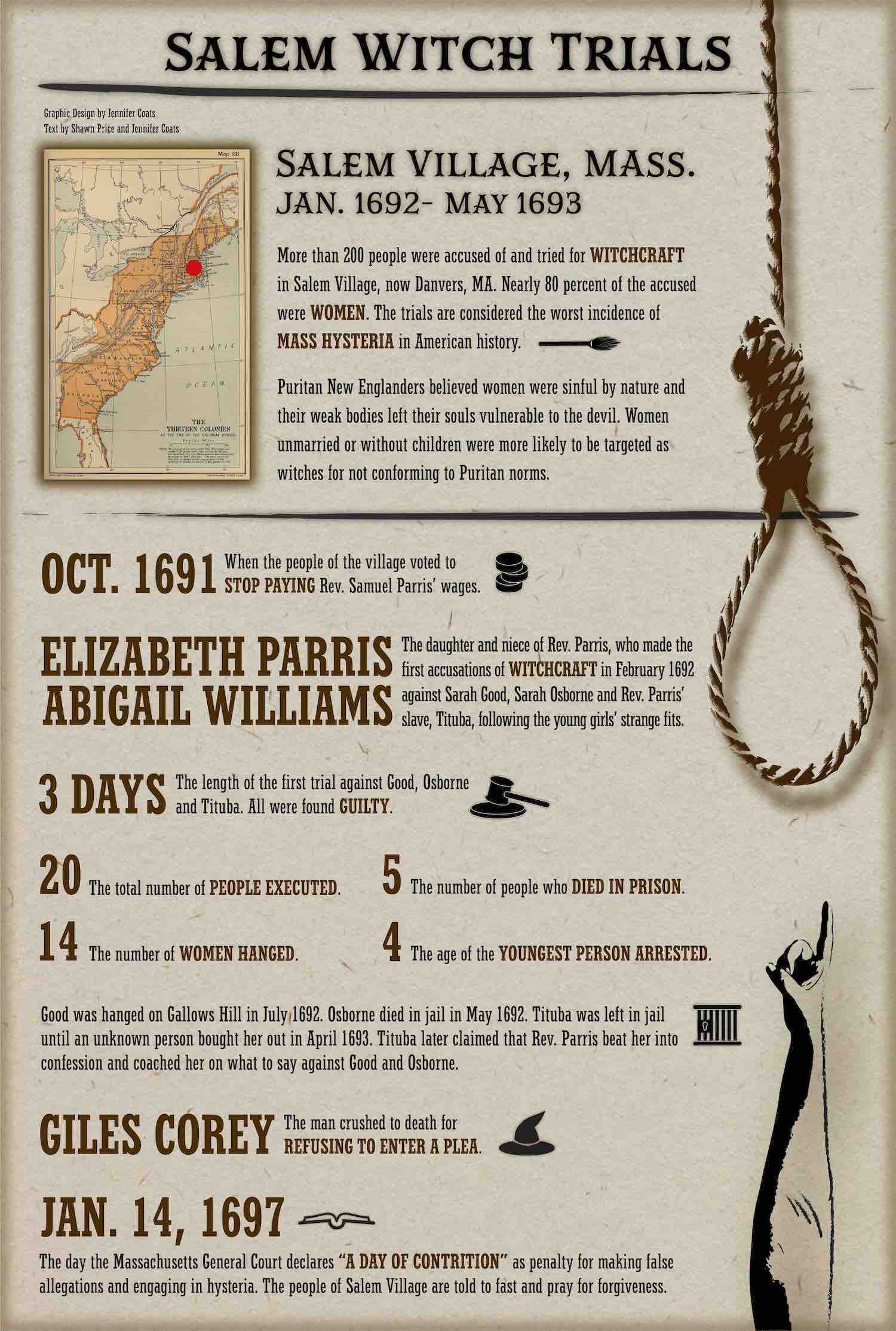The most infamous miscarriage of justice in American history began with a children’s game. It ended with the death of 20 people and the destroyed lives of 180 others.
When the Salem Witch Trials began in 1692, Salem Village was a tense, contentious place in colonial-era Massachusetts with a clergyman, Rev. Samuel Parris, trying to keep his job.
Did Parris take advantage of two young girls naivete to make himself irreplaceable to a fearful congregation? Did people in the village use the trials as a way to punish their enemies and persecute outsiders and misfits? Recent evidence points that way, but we’ll never know for sure.
Parris’ young daughter and niece were trying to tell the future with a so-called “venus glass” (an egg white suspended in water), and when they saw what they believed to be a coffin, it set in motion a cultural earthquake that would both elevate and infect the country that would become the United States.
By the 20th Century, the term “witch hunt” came into regular use, often by politicians. During the 1950s, McCarthyism had created something actually resembling what happened in Salem, inspiring playwright Arthur Miller to write the classic play The Crucible. But on the trials’ 330th anniversary, perhaps the most important thing is making sure people never forget what happened.
Halloween Every Night collected a few important facts below about the trials, but readers are encouraged to find out more for themselves.


